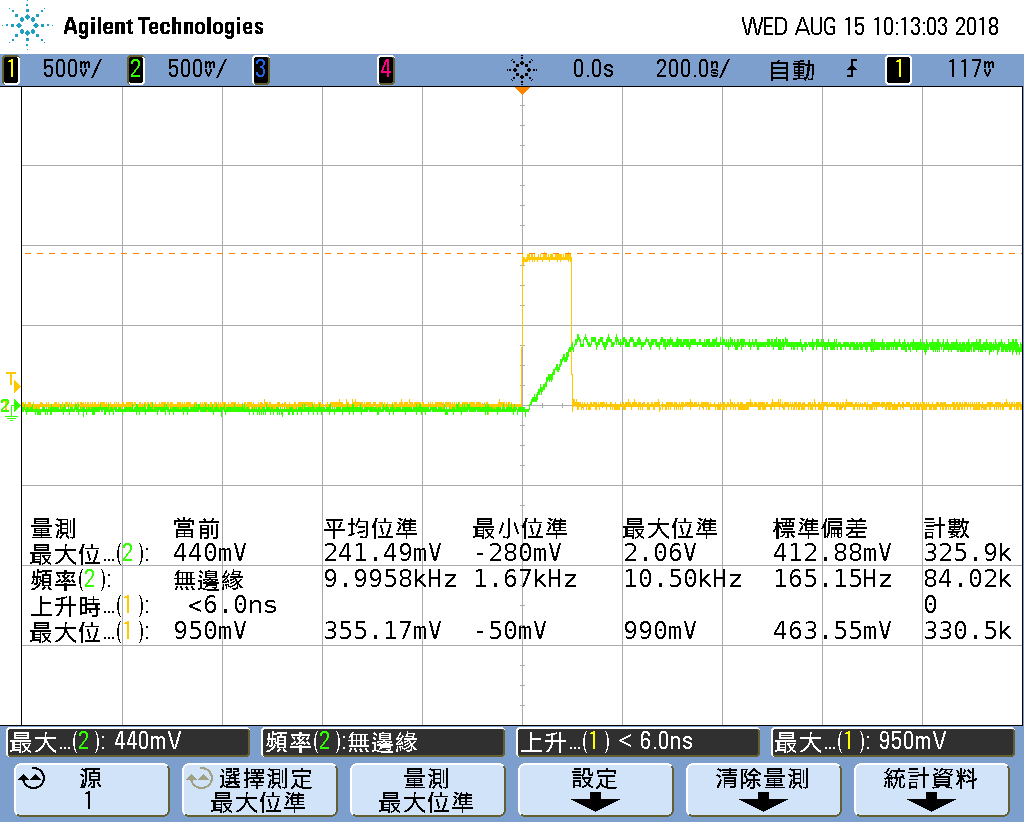Other Parts Discussed in Thread: OPA615, DEM-OTA-SO-1A
Hi,
Attached is the sample&hold circuit with OPA860, but the result is not correct with TINA simulation, please give me some advice. Thank you very much.
Best regards
kailyn
This thread has been locked.
If you have a related question, please click the "Ask a related question" button in the top right corner. The newly created question will be automatically linked to this question.
Hi,
Attached is the sample&hold circuit with OPA860, but the result is not correct with TINA simulation, please give me some advice. Thank you very much.
Best regards
kailyn
Hi Kailyn,
the circuit is actually an integrator and should be seen in a larger context:
www.ti.com/lit/an/sboa047/sboa047.pdf
Figure 27 of this link shows how this integrator has to be combined with a sample/hold scheme:
What is not mentioned in all these documents is that the integrator output shows a bouncing and needs some 10µs to relax. This can be seen in the simulation when the time axis is expanded to 100µs:
Now R7 comes into play. If it is chosen too high, then the relaxing time increases. And if it is too low, then the bouncing gets some ripple:
R8, on the other hand, determines the signal current which is mirrored out of the "collector" output of diamond transistor and by this sets the change rate of the voltage of integrating capacitance C5:
Kai
Hi Ric,
double C5, double R7 and halve R8. But keep an eye on the output offset voltage, which increases when you increase C5.
Kai
Hi Kai,
I made a PCB with OPA860 to implement sample & hold.
I followed your schematic, below is the experiment result.
Input: 950mV, 100ns of pulse.
The output voltage dropped to 450mv, the gap is too large, and I want to hold the pulse to 10us.
In my experiment, the value of C5 is 68pF, R7 is 820 ohm, and R8 is 560 ohm.
Is there any reference design of OPA860 sample&hold circuit from TI?
Please advise how to implement it.
Tahnks.
Ric


Hi Ric,
if you have pulses of different length, an integrator might not be a good solution, because the output voltage of an integrator is proportional to the area under the pulse. Using a peak detector might be a better idea. I would try this scheme:
These are two peak detectors in a row, the first for a fast rise time and the second for a slow decay time.
In the following the response of a 5ns pulse is shown:
Here the response of a 10ns pulse is shown:
Of course, this is no ready circuit but only an idea. Play with it ...
In any case you must take very good Schottky diodes with very low junction capacitance and very fast switching times. I usually take the HSMS-2812 for such circuits.
Kai